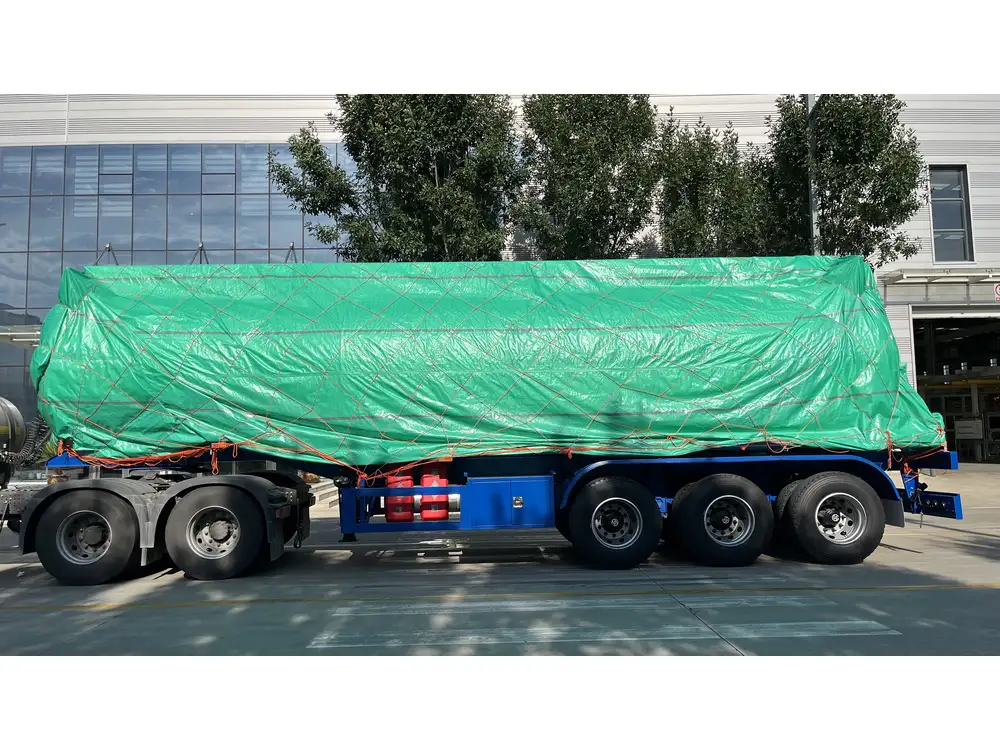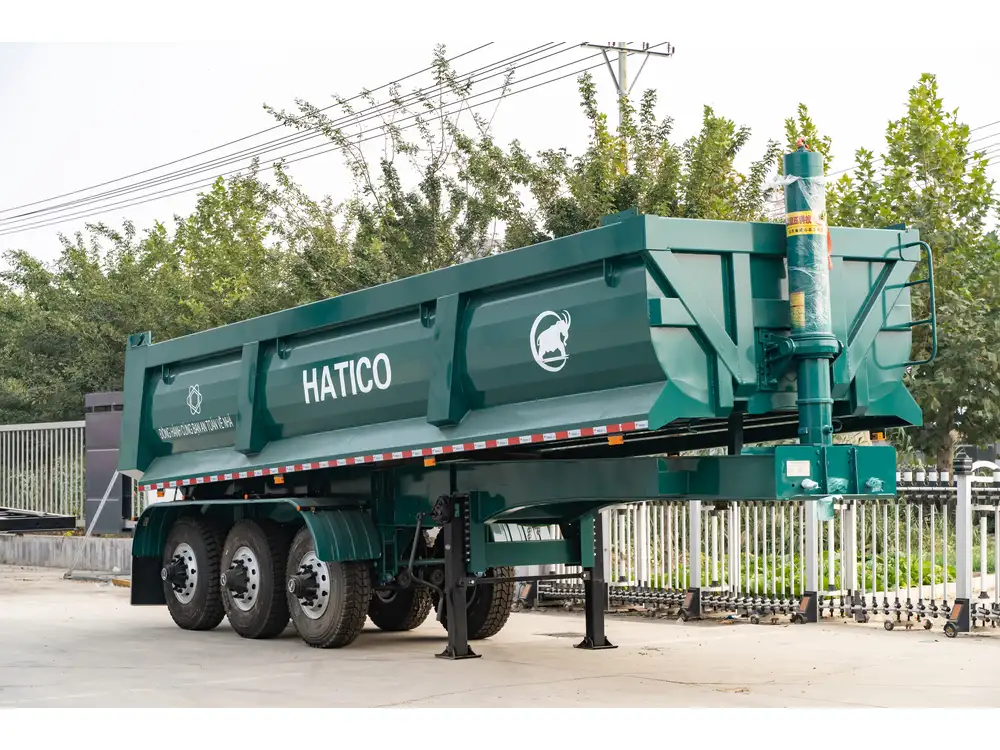Introduction to Tractor Trailer Heights
When discussing the logistics and specifications of freight transport, one cannot overlook the critical dimension of height in tractor trailers. Understanding how high a tractor trailer is can significantly impact routes, parking, loading, unloading, and overall compliance with transportation regulations. In this comprehensive exploration, we will dissect the intricacies of tractor trailer heights, highlighting standard dimensions, variations by model, and the implications for drivers and fleet managers alike.
What is a Tractor Trailer?
Before we delve into dimensional specifics, it’s essential to define what a tractor trailer entails. A tractor trailer—often referred to as an 18-wheeler or semi-truck—consists of two main components:
- The Tractor: This is the front part equipped with the engine and cab, where the driver operates the vehicle.
- The Trailer: This is the rear section used for cargo transport, which is attached to the tractor via a coupling.

Visual Representation
| Component | Description |
|---|---|
| Tractor | The powering unit with a driver’s seat, steering, and control mechanisms. |
| Trailer | The cargo-carrying unit, which can vary dramatically in size and type. |
Standard Dimensions of Tractor Trailers
Height Specifications
The height of a tractor trailer generally ranges from 13.5 feet to 14.5 feet (approximately 4.1 to 4.4 meters). However, this measurement can vary based on several factors:
- Type of Trailer: Different types of trailers (flatbed, refrigerated, dry van, etc.) might have varying height structures.
- Load Height: The height may be affected by the cargo being loaded, particularly in cases where the load exceeds standard limits.
- Equipment Variations: Additional equipment such as a sleeper cab, raised roofs, or custom modifications can alter the overall height.
| Trailer Type | Average Height (Feet) | Average Height (Meters) |
|---|---|---|
| Refrigerated Trailer | 13.5 | 4.1 |
| Standard Dry Van | 13.5 – 14.5 | 4.1 – 4.4 |
| Flatbed Trailer | 13.5 | 4.1 |

Importance of Height in Transportation
Understanding the height of your tractor trailer is crucial for several reasons:
- Bridge Clearance: There are height restrictions at overpasses and bridges that must be adhered to avoid accidents and damage.
- Loading Docks: Ideally, the trailer height needs to align with loading dock heights for seamless loading and unloading.
- Road Regulations: Different states and districts have specific regulations regarding vehicle heights that can impact route planning.
Factors Influencing Tractor Trailer Height
Terrain and Environment Considerations
When planning a logistics route, it’s important to consider the terrain and any environmental factors that might play a role:
- Urban Areas: Metropolises may have low bridges or overhangs that limit the height allowances.
- Rural Roads: While these tend to have fewer restrictions, they might present other challenges, such as uneven surfaces.

Seasonal Variations
Weather can also influence trailer dimensions indirectly. For instance, in areas prone to snow, trailers might be equipped with additional gear or modifications, impacting their height.
Regulations Surrounding Tractor Trailer Heights
Federal Regulations
In the U.S., federal law mandates a maximum height of 13.5 feet for commercial vehicles, which encompasses most tractor trailers. However, many states have their regulations:
- State-Specific Laws: States such as California or Texas may set lower limits on certain highways or bridges, necessitating awareness from drivers and fleet managers.
- Permitting Systems: For vehicles exceeding federal height limits, special permits may be required to legally travel through specific regions.

International Standards
When considering international freight transport, the height standards can vary considerably:
- European Union: Generally maintains a maximum height similar to the U.S. regulations at approximately 4 meters.
- Other Countries: Many countries have individual specifications that must be researched before international logistics transit.
| Region | Height Regulation (Feet) | Height Regulation (Meters) |
|---|---|---|
| United States | 13.5 | 4.1 |
| European Union | ~13.1 | ~4.0 |
| Canada | 13.5 | 4.1 |
Navigating Common Challenges
Bridge Strikes and Accidents
One of the most significant dangers associated with exceeding designated height limits is the risk of bridge strikes. These incidents not only cause property damage but can also lead to severe accidents, affecting public safety and resulting in costly liabilities for companies.

Preventative Measures
- Route Planning Software: Utilize advanced tools that provide details on height restrictions along a proposed route.
- Driver Training: Ensure that all drivers understand the importance of compliance with height regulations.
Parking and Storage Issues
When determining storage facilities, knowing tractor trailer height is crucial. Many parking and storage lots may have height limitations, which can be a critical factor when considering drop-off points and rest areas during long hauls.
Height Customizations for Specialized Operations

Modifications for Enhanced Operations
In certain cases, modifications can enhance a tractor trailer’s functionality. These enhancements may involve adjusting the height for specialized cargo or meeting specific industry standards:
- Pneumatic Suspension Systems: Allow for trailer height adjustment to accommodate different loading requirements.
- Customizable Ramps: Ensure easy access to trailers regardless of the height of the loading dock or surface.
Considerations for Modifications
- Budget Implications: Custom modifications can be costly; consider ROI when implementing changes.
- Regulatory Compliance: Always ensure that any height adjustments are within acceptable limits per transportation regulations.
Future Trends in Tractor Trailer Heights

Technological Advancements
As the trucking industry evolves, advanced technologies are influencing trailer designs. Some interesting trends include:
- Smart Trailers: Equipped with sensors that can automatically adjust to optimal heights based on cargo and road conditions.
- Aerodynamic Designs: These innovations seek to minimize height while maximizing fuel efficiency and cargo space.
Load Optimization Technologies
With improvements in load optimization and weight distribution technologies, it becomes possible to transport heavier loads while maintaining compliance with height regulations, offering increased efficiency without compromising safety.
Conclusion: The Importance of Understanding Tractor Trailer Heights
The height of a tractor trailer is not merely a measurement; it embodies a crucial aspect of effective logistics and transportation management. Factors such as bridge clearance, load capacity, and regulatory compliance converge at this point, making awareness paramount.
By adopting proactive strategies, leveraging technology, and staying informed on regulations, vehicle owners and fleet managers can ensure seamless operations that prioritize safety and efficiency. As we continue together through the evolving landscape of transportation, recognizing the multi-faceted dimensions of tractor trailers, specifically height, facilitates smarter decision-making and adherence to best practices in logistics management.



